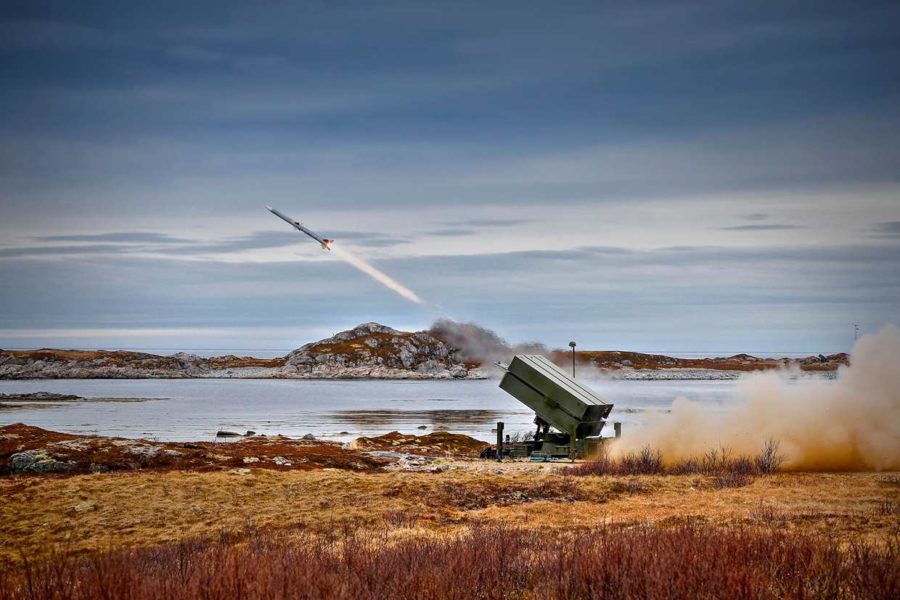The Air Force awarded $39 million to Raytheon, the defense business unit of RTX, on Oct. 3 to develop a prototype software system to command and control air base defenses against aerial threats like cruise missiles and drones. The prototype uses artificial intelligence and machine learning to analyze threat information from sensors such as radar, then recommend to operators the best defense option, which could be missiles or other weapons.
“We’ll bring our unique decision aids along with many partner components to allow for increased efficiency and effectiveness in a complex attack, while decreasing the manpower burden to operate the system,” Paul Ferraro, president of air power at Raytheon, said in a press release.
Though the U.S. Army has traditionally led air defense, the Air Force is becoming more involved as the branch seeks to defend small air bases dispersed across the Pacific from small drones and cruise missiles. The extensive use of such weapons in the Russian invasion of Ukraine has sparked increased focus on building layered air defenses that can defeat multiple kinds of threats.
“Air defense isn’t going to win the war for you,” Tom Karako, director of the missile defense project and senior fellow at the Center for Strategic and International Studies, said in a seminar on the Ukraine air war in November. “But the lack of it could lose it pretty quick.”
The $39 million award comes about a year after Raytheon and the Norwegian company Kongsberg Defense & Aerospace, in partnership with the Air Force Research Laboratory, tested command and control software on a National Advanced Surface-to-Air Missile System, a machine that can fire several kinds of missiles to hit targets at short, medium, or long range.
During the test, U.S. Army radars fed targeting information to a Raytheon Battle Space Command and Control Center (BC3), a software that connects sensors and weapons systems, analyzes threats, and recommends defense options. The BC3 gave those options to operators at a Kongsberg Fire Distribution Center.
“The operator in the FDC used that information to close the kill chain by selecting and firing the most effective missile from the NASAMS multi-missile canister launcher,” Raytheon wrote in a press release at the time.
The system’s open architecture should allow it to pair with future sensors and weapons. Though the test last year involved AIM-9X and AMRAAM missiles, the Air Force is looking into electronic warfare and directed energy to counter large numbers of small drones with a lower per-shot cost than the AIM-9 or AMRAAM, which can cost hundreds of thousands of dollars each. In the Oct. 3 release, Raytheon said it would build on the lessons learned from the NASAMS experiment as the company refines its BC3 software.
